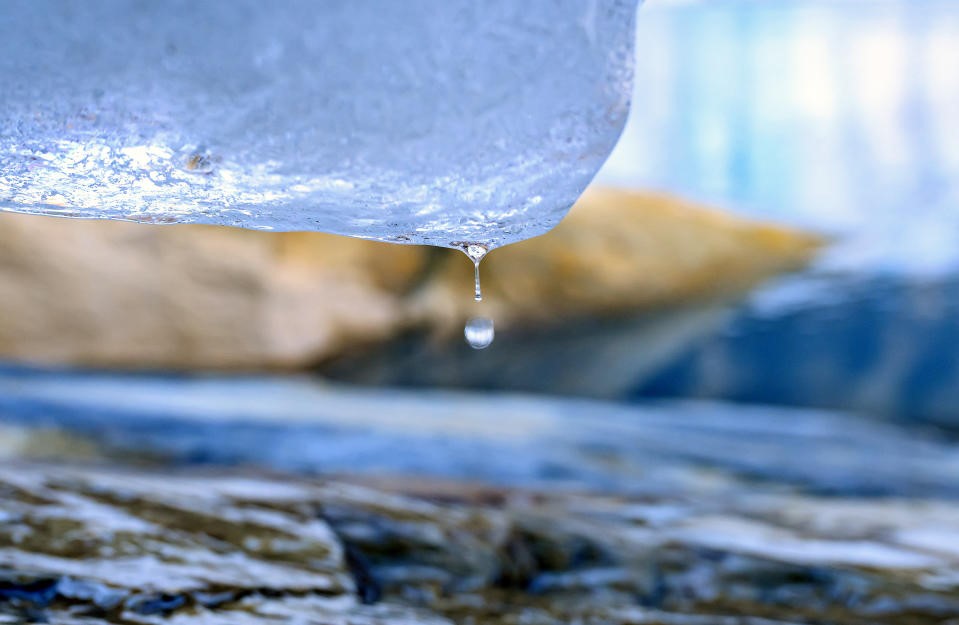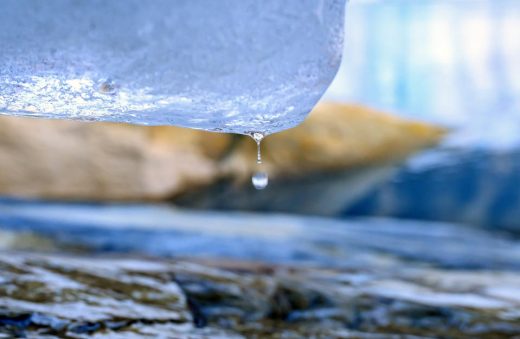The ice caps are melting. Is geoengineering the solution?
The ice caps are melting. Is geoengineering the solution?
We’re not ready for what’s coming.

Since 1979, Arctic ice has shrunk by 1.35 million square miles, a new JPL study found ice loss in Greenland is far worse than previously thought and Antarctic ice is now at the lowest level since records began. The more they melt, the faster the rate of decline for the ice that remains until we’re faced with a series of catastrophes. The most immediate of which is sea level rise which threatens to eradicate whole nations that are situated on low-lying islands. How do we stop such a problem? While we remedy the longer-term issues around fossil fuel consumption, we might have to buy ourselves more time with geoengineering.
The severity of this situation can’t be stressed enough. Professor John Moore of the Arctic Center, University of Lapland, says that we’re long past the point where emissions reductions alone will be effective. “We are faced with this situation where there’s no pathway to 1.5 [degrees] available through mitigation,” he said. “Things like the ice sheets [melting] and other tipping points will happen regardless,” adding that the Earth’s present situation is akin to a patient bleeding out on the operating table, “we are in this situation where we cannot mitigate ourselves out of the shit.”
Moore is one of the figures behind Frozen Arctic, a report produced by the universities of the Arctic and Lapland alongside UN-backed thinktank GRID-Arendal. It’s a rundown of sixty geoengineering projects that could slow down or reverse polar melting. A team of researchers opted to examine every idea, from those already in place to the ones at the fringes of science. “We wanted to be thorough,” said Moore, “because even the craziest idea might have a nugget of gold in there.” Each approach has been given a brief analysis, examining if it’s feasible on a scientific or practical basis, if it would be potentially helpful and how much it would cost. The report even went so far as to look at pykrete, a wacky World War Two initiative to create artificial glaciers for strategic use by mixing sawdust or paper products into ice.
If you’re curious and don’t have a day or two to read the report yourself, you can boil down the approaches to a handful of categories. The first is Solar Radiation Management — i.e., making the polar regions more reflective to bounce away more of the sun’s heat. Second, there’s artificial ice generation to compensate for what has already been lost. Third, enormous engineering work to buttress, isolate and protect the remaining ice — like massive undersea walls that act as a barrier against the seas as they get warmer. Finally, there are measures that nibble at the edges of the problem in terms of effect, but have more viable long-term success, like preventing flora and fauna (and the warmth they radiate) from encroaching on regions meant to remain frozen.
If you’re a climate scientist, the likely most obvious approach is the first, because we’ve seen the positive effects of it before. Albedo is the climate science term to describe how white ice acts as an enormous reflector, bouncing away a lot of the sun’s heat. Ice ages dramatically increase albedo, but there are more recent examples in living memory: In 1991 Mount Pinatubo, a volcano in the Philippines, erupted, spewing an enormous amount of volcanic ash into the atmosphere. (The event also caused a large amount of damage, displaced 200,000 people and claimed the lives of at least 722.) According to NOAA, the ash dumped into the atmosphere helped reflect a lot of solar heat away from the Earth, causing a temporary global cooling effect of roughly 1.5 degrees celsius. The devastation of Pinatubo isn’t desirable, nor was the ozone depletion that it caused, but that cooling effect could be vital to slowing global warming and polar melting.
It’s possible to do this artificially by seeding the clouds with chemicals deposited by an airplane or with ground-based smoke generators, which can also be used to promote rain clouds. This is a tactic already used in China to help make rain for agriculture and to alleviate drought-like conditions. In this context, the clouds would act as a barrier between the sun and the ice caps, bouncing more of that solar radiation away from the Earth’s surface. Unfortunately, there’s a problem with this approach, which is that it’s incredibly expensive and incredibly fussy. The report says it’s only viable when the right clouds are overhead, and the work would require enormous infrastructure to be built nearby. Not to mention that while we have some small shreds of evidence to suggest it might be useful, there’s nothing proven as yet.
And then there are the second order effects when these approaches then spill over into the rest of the global ecosystem. “If you do sunlight reflection methods and you put anything up in the atmosphere, it doesn’t stay where you put it.” That’s the big issue identified by Dr. Phil Williamson, honorary associate professor at the University of East Anglia and a former contributor to the UN’s keystone Intergovernmental Panel on Climate Change reports. His concern is that regional, targeted climate solutions “don’t solve the problem for the whole world,” and that if you’re not tackling climate change on a global scale, then you’re “just accentuating the difference.” With a cold arctic, but rising temperatures elsewhere, you’re climbing aboard a “climate rollercoaster.”
Second in the ranking of hail-mary climate approaches is to build a freezer to both cool down the existing ice and make more. Sadly, many ideas in this area forget that ice sheets are not just big blocks of immovable ice and are, in fact, liable to move. Take the idea of drilling down two miles or so into the ice sheet and pumping out the warm water to cool it down: Thanks to the constantly shifting ice and water, a new site would need to be drilled fairly regularly.
There’s another problem: The report says one project to bore a hole down 2.5km (1.5 miles) burned 450,000 liters of fuel. Not to mention how much energy it would consume to run the heat exchangers or freezers to create fresh ice on such a scale. That’s a considerable amount of greenhouse gas pollution for a project meant to undo that exact type of damage. Dumping a layer of artificially-made snow on a mountain may work fine for a ski resort when the powder’s a little thin, but not the whole planet.
As hard as the scientific and engineering battles will be, there’s also the political one that will need addressing. “A lot of people get quasi-religiously upset about putting stuff into the stratosphere,” said Professor John Moore, “you’d think they’d get similarly upset about greenhouse gasses.” One strategy under consideration is to inject sulfur into the atmosphere to replicate the cooling effects observed after major volcanic eruptions. The sulfur would form SO2, creating thick layers of dense cloud to block more heat from reaching the ice. But if you, like me, have a high school-level knowledge of science, that’s a scary prospect given that sulfur dioxide would resolve to sulfuric acid. Given the microscopic quantities involved, there would be little-to-no impact on the natural world. But the image of acid rain pouring down from the clouds means it’d be a hard sell to an uninformed population.
But if there is a reason for concern, it’s that any unintended consequences could pose a problem in the global political space. “It’s almost like declaring war on the rest of the world if [a nation] goes it alone,” says Phil Williamson, “because any damage or alteration to the global climate system, the country that did it is responsible for all future climatic disasters because the weather isn’t the same.”
Of course, Moore knows that the Frozen Arctic report’s conclusions aren’t too optimistic about a quick fix. He feels its conclusions should serve as a wake-up call for the planet. “Nobody is going to scale up something for the entire arctic ocean overnight,” he said, but that this is the time to “find ideas that might be valuable […] and then put resources into finding out if [those ideas] really are useful.” He added that the short turnaround time before a total climate disaster isn’t much of an issue, saying “engineers can pretty much do anything you ask them to if you put enough resources into it.” Because the alternative is to do nothing, and “every day that we choose to do nothing, we accept more of the damages that are coming.”
(25)


